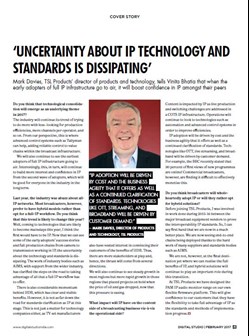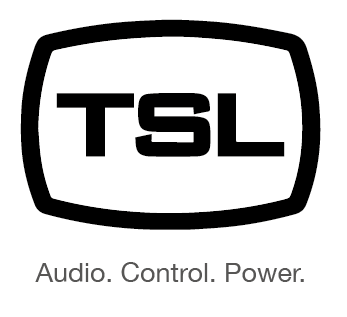 Mark Davies, TSL Products’ director of products and technology, tells Vinita Bhatia of Digital Studio India that when the early adopters of full IP infrastructure go to air, it will boost confidence in IP amongst their peers:
Mark Davies, TSL Products’ director of products and technology, tells Vinita Bhatia of Digital Studio India that when the early adopters of full IP infrastructure go to air, it will boost confidence in IP amongst their peers:
Do you think that technological consolidation will emerge as an underlying theme in 2017?
The industry will continue its trend of trying to do more with less–looking for production efficiencies, more channels per operator, and so on. From our perspective, this is where advanced control systems such as Tallyman can help, adding reliable control to value chains within the broadcast infrastructure. We will also continue to see the earliest adopters of full IP infrastructure going to air. Interestingly, this, in turn, will continue to build more interest and confidence in IP from the second wave of adopters, which will be good for everyone in the industry in the long term. Last year, the industry was abuzz about all-IP networks. Most broadcasters, however, prefer to have hybrid models rather than opt for a full-IP workflow.
Do you think that this trend is likely to change this year?
Well, coming to technologies that are likely to become mainstays this year, I think the first would have to be IP. Now that we can see some of the early adopters’ success stories and full production chains from camera to transmission working in IP, the uncertainty about the technology and standards is dissipating. The work of industry bodies such as AIMS, with support from the wider industry, has clarified the steps on the road to taking
advantage of all that a full IP workflow has to offer. There is also considerable momentum behind HDR, which has clear and visible benefits. However, it is not as far down the road for standards clarification as IP at this stage. This is not just a matter for technology companies either, as TV set manufacturers also have vested interest in convincing their customers of the benefits of HDR. Thus, there are more stakeholders at play and, hence, the thrust will come from several directions. We will also continue to see steady growth in most regions but more rapid growth in those regions that placed projects on hold when the price of oil and gas dropped, now that this pressure is easing.
What impact will IP have on the content side of a broadcasting business vis-à-vis the operational side?
Content is impacted by IP as live production and switching challenges are addressed in a COTS IP infrastructure. Operations will continue to look to technologies such as automation and advanced control systems in order to improve efficiencies. IP adoption will be driven by cost and the business agility that it offers as well as a continued clarification of standards. Technologies like OTT, live streaming, and broadband will be driven by customer demand. For example, the BBC recently stated that 30 percent of first views of new programmes are online! Commercial broadcasters, however, are finding it difficult to effectively monetise this.
Do you think broadcasters will wholeheartedly adopt IP or will they rather opt for hybrid solutions?
Before joining TSL Products, I was involved in work done during 2015-16 between the major broadcast equipment vendors to prove the interoperability IP standards. So, I can say first hand that we are now in a much better place. We are now seeing end-to-end chains being deployed thanks to the hard work of many suppliers and standards bodies such as AIMS. We are not, however, at the final destination yet where we can realise the full benefits of IP, and hybrid solutions will continue to play an important role during this transition. At TSL Products we have designed the PAM IP audio monitor range on our own flexible firmware platform. This will give confidence to our customers that they have the flexibility to take full advantage of IP as the standards and methods of implementation progress.
The full issue of Digital Studio February edition can be accessed here >

